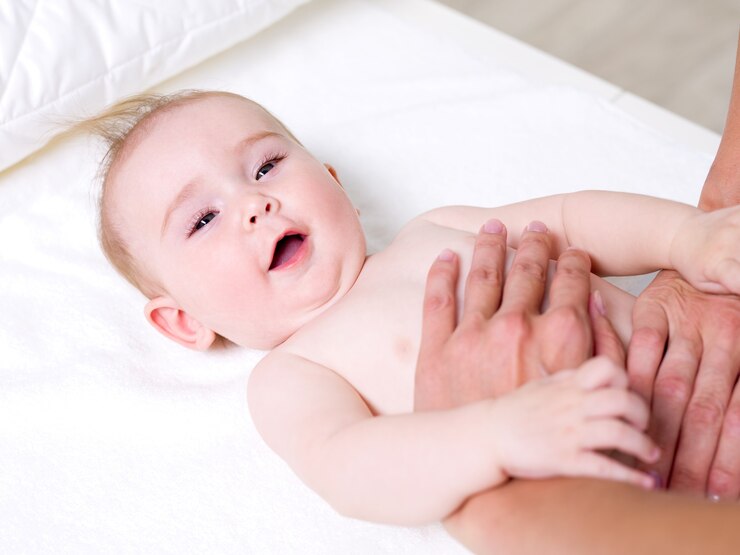
Combatting Summer Troubles: Tips for Soothing Heat Rashes in Babies
Although summertime means having fun, sunshine, and long vacations, the intense heat of summer can lead to several skin conditions, with heat rash being the most common. Your infant's skin can become irritated and uncomfortable if not properly cared for.
But now, you don't need to worry! In this article, we will share important knowledge and advice that will help you prevent your baby from the attack of heat rashes in the summer.
Heat Rash in Babies - An Overview
Heath, also known as Prickly heat, reveals small red-colored pimples on your baby's skin. It occurred due to the hot, muggy weather, tight clothes, or even multiple time hugs. Rashes occur when sweat ducts become clogged, trapping sweat beneath the baby's skin. There are more chances of rashes to occur when a baby's sweat glands are growing.
Heat rashes are not only harmful but the itching and discomfort resulting from the rashes can also make your baby uncomfortable and cranky. So, read more to learn about the strategies to provide relief and prevent its reoccurrence.
Signs and Symptoms of Heat Rashes in Your Baby
Understanding the symptoms of heat rash enables you to treat it quickly and stop more agony. Here are some crucial indicators to be aware of:
Tiny Red Lumps or Blisters
The most typical sign is the development of clear, tiny blisters or tiny, red lumps on your baby's skin. These usually appear on the neck, chest, back, and inner thighs - where sweat tends to collect quickly. Heat rash can occasionally develop on the arms, face, or scalp.
Irritability and Fussiness
Your baby may become irritable and fussy due to the heat rashes, persistent itching, and irritation. They may appear uncomfortable and cry more frequently, especially when handled in the afflicted areas.
Loss of Appetite
In extreme cases, the pain may cause a loss in appetite, making it difficult for your infant to consume the right foods.
Remember to contact your pediatrician every once if you get any serious heat rash symptoms, such as fever or pus-filled blisters.
Seek Relief Using Prickly Heat Powders and Heat Rash Powders
The first thing to do when your infant has a heat rash is to soothe their irritability and encourage recovery. Specialized heat rash powders and prickly heat powder for babies can literally save lives. What you should know is as follows:
Prickly Heat Powders
These powders are made without talc and contain calming components, including zinc oxide, calamine lotion, and corn flour. They lessen friction and discomfort on your baby's skin by absorbing extra moisture. To prevent causing more irritation, choose a mild, fragrance-free formulation.
Heat Rash Powders
Unlike prickly heat powders, these therapeutic powders have larger quantities of substances like zinc oxide or calamine lotion. They promote healing and lessen inflammation to provide more focused comfort. To select the best heat rash powder for rashes and itching of your baby, speak with your pediatrician.
Tips to Avoid and Treat Baby Heat Rash Yourself
Now, read some very useful tactics to avoid heat rash and lessen discomfort if it does occur:
Use Breathable Clothes for Your Baby
Go for loose-fitting clothing made of natural fibers, such as cotton, to improve air circulation and keep perspiration from building up.
Maintain a Cool Environment
Whenever possible, place your infant in a cool, air-conditioned room. If there isn't air conditioning, carefully direct the flow of air with a fan.
Limit Your Time Outside
Avoid extended facing to the sun, especially between the hours of 10 a.m. and 4 p.m., when temperatures are at their highest. If you must go outside, protect your infant from the sun with an umbrella or pram shade.
Regular Bathing
Especially in the summer, give your infant two or three lukewarm showers each day. Rather than rubbing, gently pat their skin dry.
Give Plenty of Fluids
Breastfeeding infants and providing boiled, cooled water to older babies both aid in helping them maintain proper body temperature and hydration.
Conclusion
Even though it hurts, heat rash is a common and treatable problem/illness for babies. With gentle solutions, preventive measures, and an understanding of the causes, you can effectively manage heat rash and make sure your child stays cool and happy all year long. Remember that a proactive strategy is essential to averting recurrences. Please do not hesitate to contact your pediatrician if the heat rash appears severe or if you have any concerns.
